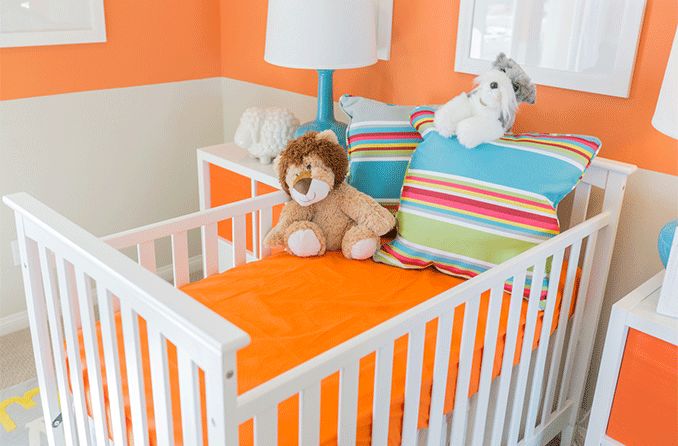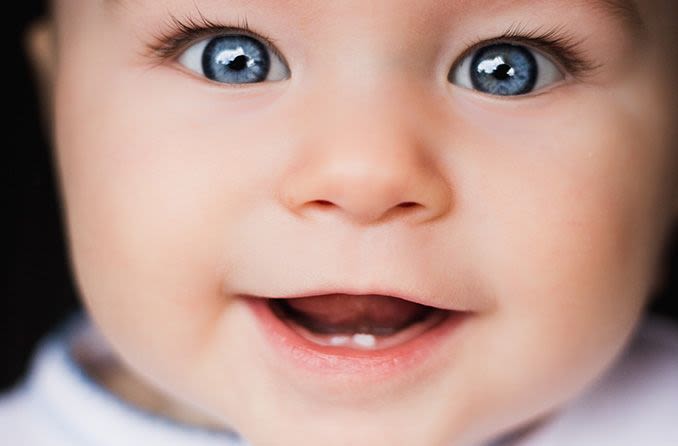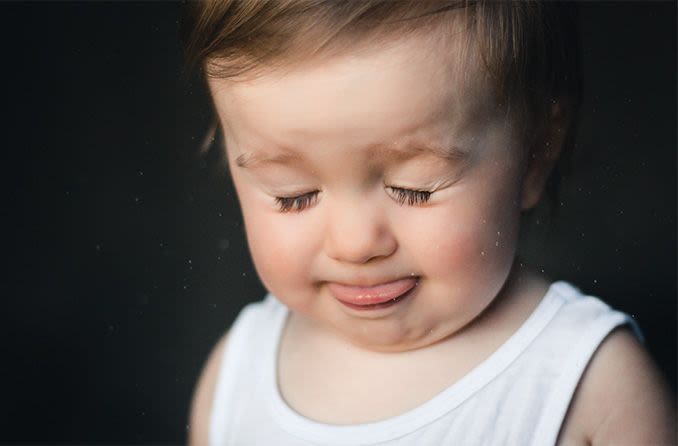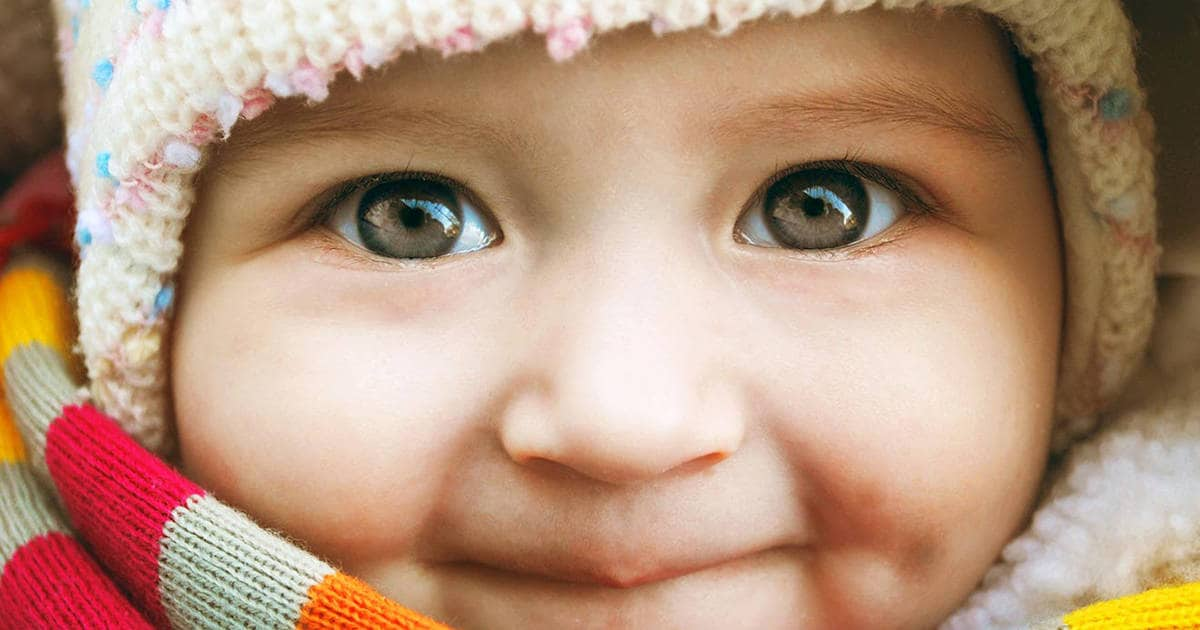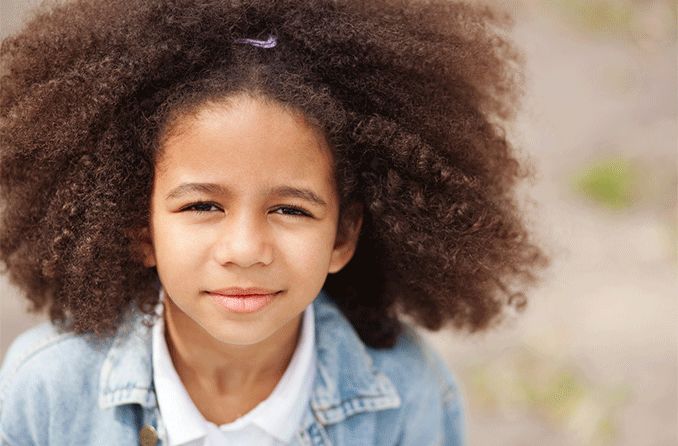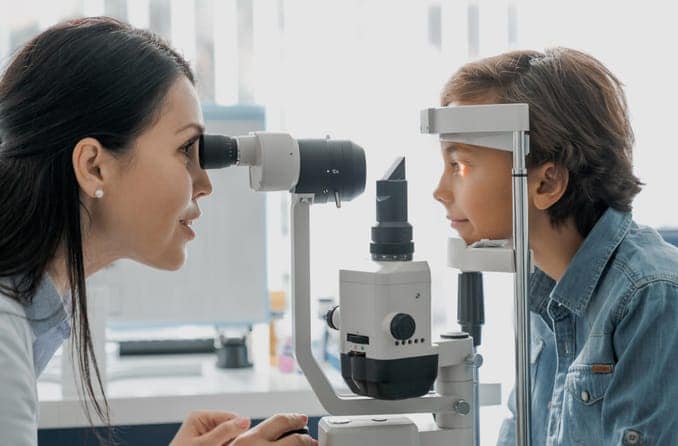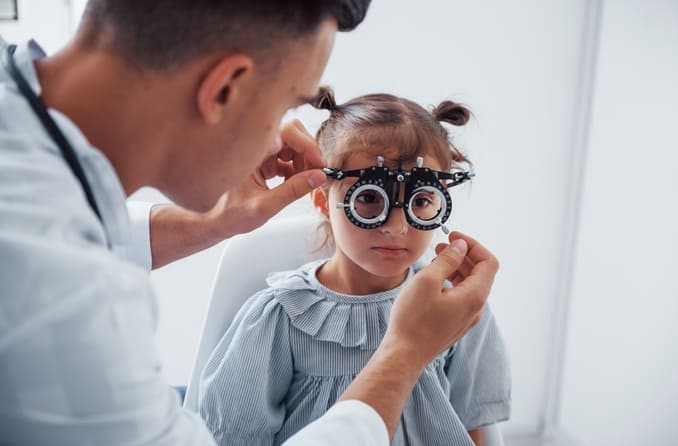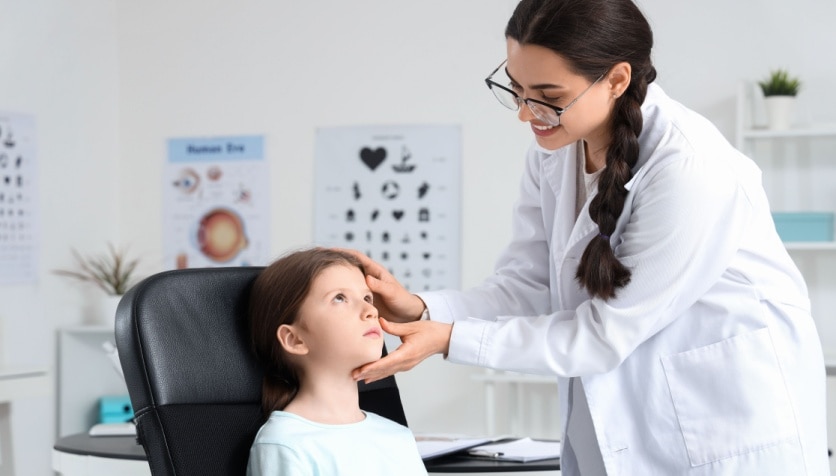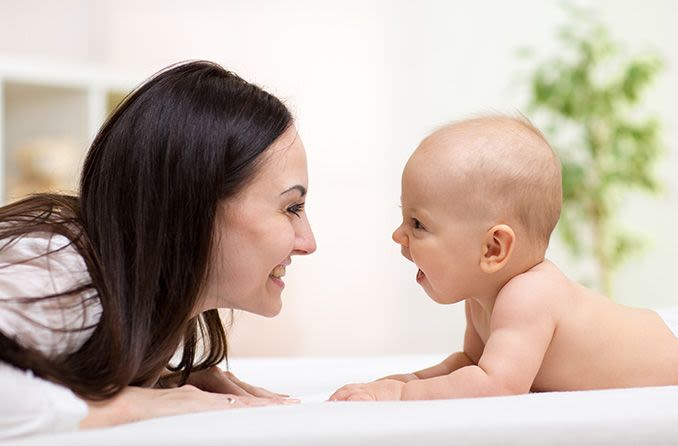Sure, babies in sunglasses are adorable, but do the wee ones really need sunglasses? To put it simply, yes.
While everyone should protect their eyes from the sun’s damaging rays, it’s particularly important for babies, as their eyes are much more sensitive, as is the delicate skin around the eyes.
Baby sunglasses protect your child’s eyes now and as they grow and can also play a role in developing lifelong sun-healthy habits — even from a very young age.
That’s why it’s so important to choose sunglasses with effective UV protection (which can help prevent long-term damage) that fit and feel good so that your baby will actually wear them.
Knowing how sunglasses work to protect the eye — as well as the best types for infants and where to buy them — can help you find just the right pair for your baby.
Why babies need sunglasses
Babies and young children under the age of 10 have very sensitive eyes. Because their eyes are still developing, the crystalline lens in a baby’s eye cannot filter out the sun’s ultraviolet (UV) rays as well as adult eyes do.
This means that greater amounts of visible blue andharmful ultraviolet rays can get into their eyes, which may make babies more susceptible to damaged retinas and other vision issues.
Unfortunately, you cannot reverse sun damage caused by exposure to UV rays. Even short periods in the sun can cause damage, which can result in a variety of eye diseases as you age, including macular degeneration, dulling of colors, cataracts, or even a rare form of eye cancer. Sun damage can also cause skin cancer.
Additionally, a baby’s eyelids and the skin around their eyes is very delicate. Even if a baby closes their eyes to protect them from the sun, their thin eyelids can burn. And since the skin is so transparent, some sunlight can still reach the retina. Babies need sunglasses to protect their delicate eyes and the skin around their eyes.
When should babies start wearing sunglasses?
According to theAmerican Academy of Pediatrics (AAP), infants younger than six months old should not really be exposed to the sun — at all. To keep them safe, you can use your stroller’s canopy, an umbrella or the shade of a tree or a building overhang.
At six months old, it’s safer for babies to be out in the sun, but it’s still very important to keep them protected from the sun’s harmful rays. Experts at theAmerican Academy of Ophthalmology suggest that the best way to protect a baby from the sun is by using a hat with a brim, sunscreen and sunglasses.
READ MORE: What parents need to know about kids’ sunglasses and vision health
What to look for in baby sunglasses
A pediatric ophthalmologist can help you find the best baby sunglasses for your child. They’ll tell you which sunglasses will properly protect your baby’s delicate eyes and skin and fit their smaller face.
When shopping for baby sunglasses, consider the following:
Effective UV protection: This is the most important thing to look for in every pair of sunglasses that you buy. Make sure your baby’s sunglasses block 100% of UVA (long-length) and UVB (short-length) rays or UV absorption up to 400nm. There should be a sticker or tag that indicates the percentage of UV protection they provide.
- Proper Fit: Babies tend to wiggle and pull at their clothing and sunglasses are no exception. To keep sunglasses on their face, look for a pair that will provide a snug fit — they should wrap around their face and over their ears. Make sure the sunglasses fully cover the skin around their eyes and on their cheeks. This not only protects their delicate skin, but prevents UV rays from sneaking in from the side. For babies, bigger sunglasses are generally better.
- Durability: Test the frames before you buy and look for ones that can bend a bit without breaking. As for lenses, while no lens is fully unbreakable, plastic and polycarbonate lenses are the way to go; they’re less likely to shatter and cause damage to your baby’s face. Most non-prescription lenses are plastic, but some do scratch, so look for lenses with scratch-resistant coatings.
- Polarized lenses: Your baby doesn’t necessarily need sunglasses with polarized lenses. However, they can be a good option for when you’re driving or if you’re out on the water, as they reduce the amount of glare from the sun’s rays bouncing off reflective surfaces (metal, water, snow, etc.). If you choose to buy polarized lenses, make sure they provide 100% UV protection.
- Lens color: Don’t let darker lenses trick you into thinking your baby eye’s will be better protected. It’s the UV protection that’s important, no matter the shade or tint of the sunglasses. A medium lens is usually all your baby will need, but if you plan to be in very bright light, a darker lens can be helpful.
SEE RELATED: Choosing the best sunglasses for kids
The best baby sunglasses
Whether they’re a designer brand or feature kid-friendly colors or fun frames, the best baby sunglasses are always going to be the ones that protect your baby’s eyes from UV rays while fitting them well.
Ineffective UV protection can in fact harm your baby’s eyes even more than if they didn’t wear sunglasses at all. According toThe Vision Council, cheap sunglasses without proper UV protection provide enough shade to dilate the pupils but won’t prevent the sun’s harmful rays from getting into the eyes.
The quality of the materials is also important. Very cheap sunglasses may not have the same tint throughout the lens, which can make it hard to see clearly and cause headaches or eye strain.
If you’re concerned about your baby’s sunglasses, try looking through the lens yourself or asking an optometrist for advice.
Baby aviators and other designer sunglasses
Do you dress your baby in the latest trends? Do they have a pair of shades to match every outfit or mood? You’re in luck! You can find plenty of high-end sunglasses types that offer UV protection for your baby’s eyes — just be sure to check before you buy — while keeping them stylish, including:
- Baby aviator sunglasses: Aviator sunglasses are designed to cover the entire field of vision as well as prevent UV radiation from entering the eye at any angle. Baby aviator sunglasses are very popular and come in a wide variety of colors and designs that won’t break the bank.
- Designer baby sunglasses: Baby sunglasses from well-known designers and brands come in a variety of styles and colors — from pink glitter frames to classic Wayfarer-style types. Top-rated Beaba offer fashionable sunglasses with built-in straps for newborns, while the popular Julbo brand’s Looping style is a trendy option for older babies (starting at 2 years of age).
With so many safe, cute and stylish choices available, there’s no reason not to protect those baby eyes. You can have fun with it and get a few pairs to keep in various places (diaper bag, stroller, car, etc.) so that there’s always a pair available.
Just remember that novelty or costume sunglasses are for playtime and photos only. They won’t protect your baby’s eyes from the sun.
Where to buy baby sunglasses
Where you purchase sunglasses will depend on which type of eye protection is right for your child.
If your baby wears prescription eyeglasses, for instance, you’ll want to visit your eye doctor to get special sunglasses with that prescription. An optometrist or ophthalmologist can also help you find the perfect fit for your baby and recommend the best brands.
For non-prescription sunglasses, avoid any that offer limited (or no) UV protection, or are uncomfortable or cause headaches — your best bet is to seek out only reputable retailers. Stay away from sunglasses at dollar stores, novelty sunglasses, or similar cheap products that won’t properly protect against UV rays.
When buying your baby’s first pair of sunglasses, try several pairs until you find one that your baby seems to like.
Once you’ve found the right protection, size and fit for your baby, it’s a good idea to get a few pairs so you always have some on hand.
How to get your baby to wear sunglasses
It won’t always be easy to get, and keep, sunglasses on your baby’s face. Depending on the day, your baby may not like the feeling, want to play with them or put them in their mouth.
One solution is to attach soft straps to keep the sunglasses in place. Or, you can even try a few different pairs until you find some that your baby enjoys wearing — after all, if they are comfortable, your baby is less likely to toss them away.
Things to consider include:
- Making sure they’re secure: When buying your baby’s first pair of sunglasses, look for ones that wrap all the way around the baby’s head, making them more difficult to remove. Or, purchase a soft, elastic strap that can safely and securely attach to the frame. Some brands come with straps already attached.
- Minimizing discomfort: Don’t forget that, for babies, comfort is essential. You may need to try several pairs of soft, lightweight baby sunglasses before you find the ones that feel right for your child.
- Modeling good behavior: As they grow and develop, babies start copying their parents. Wearing your sunglasses sets a good example, as you model sun-healthy habits that are best learned while your child is young.
If your baby refuses to wear their sunglasses during a short walk or any other brief time outdoors, don’t fret. Look for other ways to protect their eyes, such as the stroller’s visor, a hat or other breathable coverings.
Sunglasses are most important when your child will be in direct sunlight for a few hours.
Always practice good sun safety
As mentioned earlier, babies younger than six months old should be kept out of direct sunlight. Once they’re old enough, you should continue to keep them out of direct sunlight, particularly between 10 a.m. and 4 p.m., as that’s when the sun’s rays are strongest.
When you’re heading outdoors, other factors to keep in mind are:
- Daily UV index: Before you choose to spend time outdoors, check the daily UV index to make sure everyone in your family is properly protected. Experts at theEnvironmental Protection Agency (EPA) suggest that you still need to take precautions to stay safe from the sun even when the index is low (level 1 or 2) or moderate (level 3-5).
- Beach and sand safety: Sunglasses don’t just protect a baby’s eyes from the sun; they can also prevent sand or dirt from getting into their eyes. When you’re at the beach, make sure to use sunglasses that wrap tightly around your baby’s face. And keep in mind that good sun protection doesn’t just include baby sunglasses — you should also use sunscreen and a hat with a wide brim to protect the rest of their face.
- Water safety: Did you know that you can actually get a sunburn on your eyes when you’re on a boat or in the water? When the sun reflects off of the water, it can sometimes cause a painful sunburn, called photokeratitis (also known as “snow blindness”), on the front part of the eye. This sunburn can cause redness, blurry vision and sensitivity to bright light.
- Winter weather and snow conditions: Regardless of the temperature, if the sun is out, its rays can do damage to your eyes and your skin. Babies are no exception. Since snow is a reflective surface, sunlight can bounce off it easily, creating an intense glare that can even cause temporary and painful snow blindness. While this will heal on its own after several days, babies who are affected may blink frequently and be very cranky.
- Cloudy skies: Even when it’s not sunny, UV rays can penetrate clouds and damage your baby’s delicate eyes. Only heavy clouds can block most UV radiation. If the clouds are puffy, they can actually deflect the sun’s rays, which will increase the amount of UV radiation on the surface. When the clouds are thin or broken, the sun’s UV rays will shine right through.
- Car safety: It’s important to keep in mind that a standard, clear window will block UVB light, but not UVA light. If your car’s glass isn’t tinted to block out UVA rays, be sure to protect your baby’s eyes (and your own) whenever they’re in the car.
- Stroller/baby carrier safety: Whether you’re pushing your baby in a stroller or carrying them on your chest or your back in a carrier, you’ll want to make sure they’re positioned so they’re not staring directly into the sun. If the stroller shield or carrier cover isn’t properly positioned or isn’t long enough, those UV rays may still hit their eyes — have a wide-brimmed hat and sunglasses available just in case.
Protect those delicate eyes now for future vision health
According to theAAO, a baby’s retinas are still developing after they’re born, and they don’t begin to see light and dark until they’re several weeks old. Their developing eyes are so fragile, in fact, that they can’t properly handle the sun and the damaging UV rays. Just one unprotected day in the sun can cause irreversible UV damage.
To keep your baby’s eyes safe now (which in turn helps prevent eye diseases as they age), always make sure they’re protected from the sun. If you establish good sun-safety habits, even at infancy, you can help set your child up for a lifetime of healthy vision.
RELATED READING: Do kids need sunglasses?

